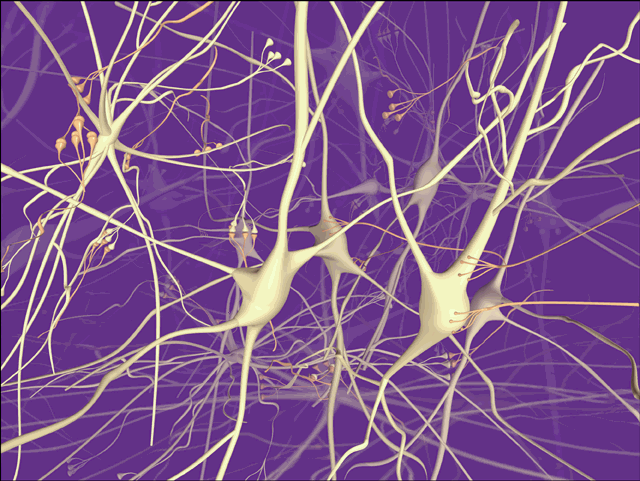This article appeared in Live Science a few days back. It's always interesting when one discipline reveals something unknown about another -- in this case economics explaining a brain mystery. Strange that a statistics concept from economics explains how information moves from neuron to neuron in the brain -- and also very cool.
Economics Concept Explains Brain Mystery
By Amelia Tomas, LiveScience Staff
posted: 17 October 2008 09:37 am ET
Using a concept from economics, researchers have figured out how information gets pulled through a series of regions in the brain.The economics approach, called Granger causality, now has been applied to neuroscience to suggest that neural wires physically stimulate each other, charging up networks in sequence. The result shows that materials are drawn from one specialized part of the brain to the next.
In economics, scholars use Granger causality as a statistical concept that is based on prediction. Add a twist of neuroscience, and Granger causality is a useful tool, says Chad Sylvester, a graduate student at Washington University School of Medicine in St. Louis.
The Granger concept supports evidence for neuron-to-neuron triggering by measuring them in a direct, but non-invasive way, he said.
For years, scientists could see which brain regions were contributing to specific mental tasks by viewing Magnetic Resonance Imaging (MRI) scans, however getting those scans fast enough to trace the brain’s informational pull was difficult.
In Sylvester’s experiment, volunteers were asked to attune their gaze to a portion of a screen, looking for a specific cue. Previous research revealed that this task activated two brain areas: the frontoparietal cortex, which is involved in the direction of the attention; and the visual cortex, which becomes more active in the area where volunteers expected the stimulus to appear.
The researchers were able to show that as volunteers waited for the stimulus to appear, the frontoparietal cortex was specifically influencing the visual cortex, not the reverse. Sylvester’s use of Granger causality supported the finding of specific interactions between brain regions and their wired relay of information during a particular mental assignment.
Down the line, researchers plan to look into applying these insights into questions about brain organization and function, such as our capacity to pay attention and how memory retrieval areas interact with visual processing regions. Trauma studies will also explore how the brain can adapt to a simple injury, or how the presence of such an injury can hinder information flow to other extremely important areas of the brain.
The results of the new study are detailed in the Oct. 1 issue of The Journal of Neuroscience.
(For super-geeks reading this, according to Granger causality, if a signal X1 "Granger-causes" a signal X2, then past values of X1 should contain information that helps predict X2 above and beyond the information contained in past values of X2 alone.)

1 comment:
like saying the tall grass in the meadow is composed of individual stalks that stimulate each other to create motion ... when the wind blows ... and i am interested in the wind, which cannot be deduced from the stalk (neuron) motion
Post a Comment